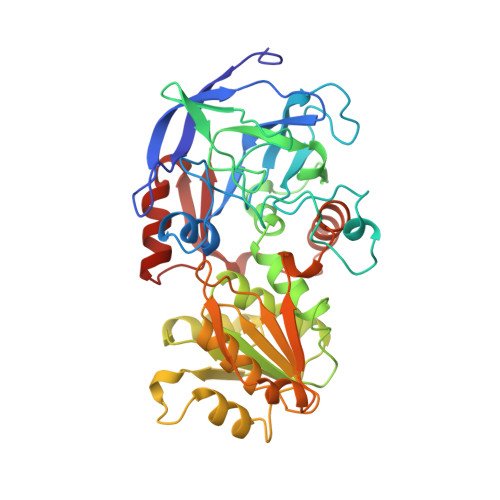Binding of formamides to liver alcohol dehydrogenase.
Ramaswamy, S., Scholze, M., Plapp, B.V.(1997) Biochemistry 36: 3522-3527
- PubMed: 9132002
- DOI: https://doi.org/10.1021/bi962491z
- Primary Citation of Related Structures:
1LDE, 1LDY - PubMed Abstract:
Amides are analogs of aldehydes and potent inhibitors of liver alcohol dehydrogenases. They can be used for structural studies and for inhibiting the metabolism of alcohols that form toxic products. We studied N-alkyl amides that bind to the enzyme-NADH complex and act as uncompetitive inhibitors against varied concentrations of ethanol (millimolar Kii values, at pH 8 and 25 degrees C): N-propylacetamide (16), delta-valerolactam (1.6), N-formylpiperidine (0.14), N-isobutylformamide (0.028), N-(cyclohexylmethyl)-formamide (0.011), and N-cyclohexylformamide (0.0087). The lower affinity of delta-valerolactam and N-propylacetamide can be explained by steric hindrance with Phe93 of the enzyme. Replacing Phe93 with Ala in the S48T/F93A mutated enzyme, which resembles the natural alpha-isoenzyme of primates, improved binding of delta-valerolactam by 210-fold. The structures of horse liver enzyme complexed with NADH and N-cyclohexylformamide or N-formylpiperidine were determined by X-ray crystallography at 2.5 A resolution. In both complexes, the carbonyl oxygens of the inhibitors bind to the catalytic zinc and form a hydrogen bond to the hydroxyl group of Ser48 of the enzyme. The six-membered rings bind in overlapping, but rotated, positions that optimize hydrophobic interactions. The binding modes of the unreactive formamides appear to resemble the Michaelis complexes of the analogous substrates, with the re face of the carbonyl carbon suitably positioned to accept a hydrogen from NADH.
Organizational Affiliation:
Department of Molecular Biology, Swedish University of Agricultural Sciences, Uppsala.

















